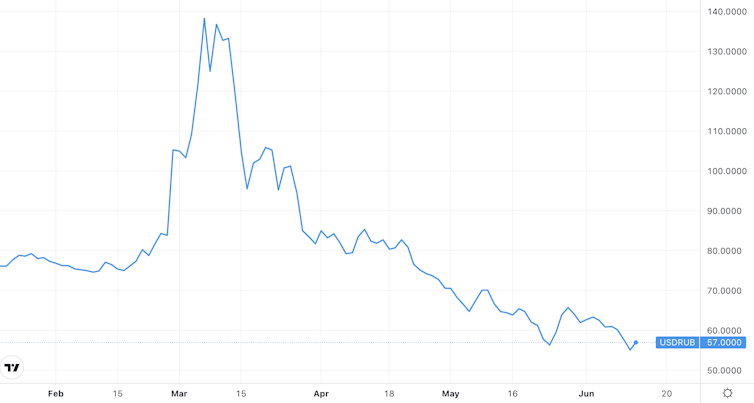Russia's rouble is now stronger than before the war – western sanctions are partly to blame
- Written by Kirill Shakhnov, Lecturer in Economics, University of Surrey

In the days after Russia invaded Ukraine in February 2022 and the west imposed sanctions, the rouble collapsed. The number of roubles to one US dollar quickly fell from about 78 to 138 – a huge move in the world of forex (foreign exchange), and terrifying for those with their wealth in the Russian currency.
Since then, sanctions have tightened and the war shows no signs of reaching an end, but something unexpected has happened to the rouble. Many commentators had thought it would continue weakening, but instead it is now stronger than when the war began. The US dollar is now worth 57 roubles, the best exchange rate in about four years.
Rouble v US dollar







